Balder Formation
updated to follow: Stratigraphic Guide to the Rogaland Group, Norwegian North Sea. Harald Brunstad, Felix M. Gradstein, Jan Erik Lie, Øyvind Hammer, Dirk Munsterman, Gabi Ogg, and Michelle Hollerbach. Newsletter on Stratigraphy, vol 46/2 pp137-286, 2013.
Rogaland Group
Members of the Formation
Odin Member | Radøy Member |
Unit definition
The Balder Formation is the uppermost formation of the
Rogaland Group
(Fig. 125)
.
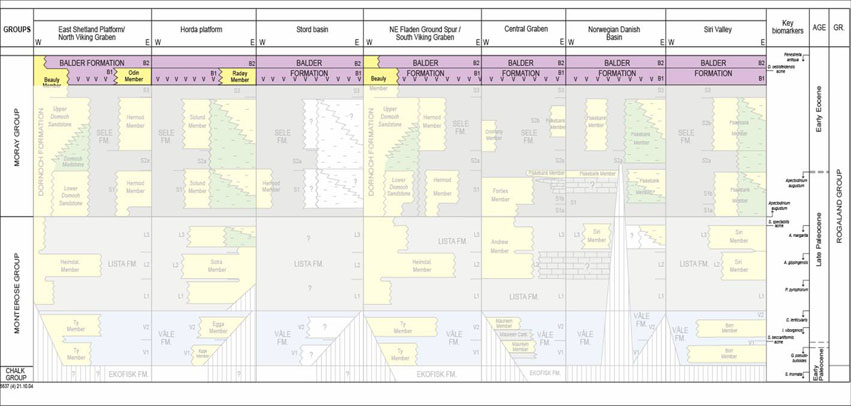
Fig. 125. Lithostratigraphic summary chart of the Balder Formation (color) with
members.
|
Name
The Balder Formation name was given by Deegan and Scull (1977) to the tuffaceous shales above the Sele Formation in the North Sea.
Derivatio nominis
The formation was named after the Balder Field in Norwegian blocks 25/10 and 25/11.
Balder was a son of Odin, and one of the most famous gods in Norse mythology.
Type well
Norwegian well 25/11-1 (Fig. 126)
from 1780 to 1705 m (Deegan and Scull 1977), coordinates N 59°10'57.39", E
02°24'28.18". Cores.
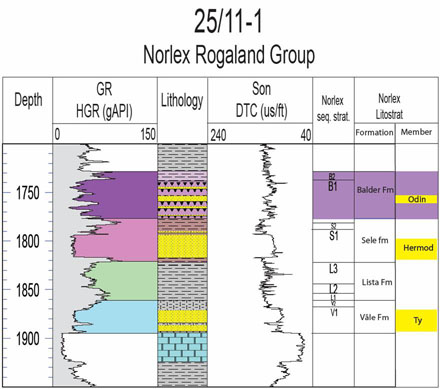
Fig. 126. Well 25/11-1 Composite log Rogaland Group. Stratigraphic position of the
Balder Formation is outlined in stratigraphic column to the right.
|
Reference wells
Norwegian well 30/2-1 (Fig. 127)
. Depth 1993 to 1917 mRKB. Coordinates N 60°52'05.42", E 02°38'49.16".
Cores: Core 1 and 2.
Norwegian well 15/9-17
(Fig. 128)
. Depth 2253 to 2204 m. Coordinates N 58°26'44.19", E 01°56'53.58". No
cores.
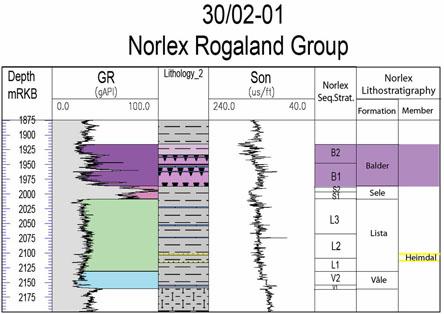
Fig. 127. Well 30/2-1 Composite log Rogaland Group. Stratigraphic position of the
Balder Formation is outlined in stratigraphic column to the right.
|
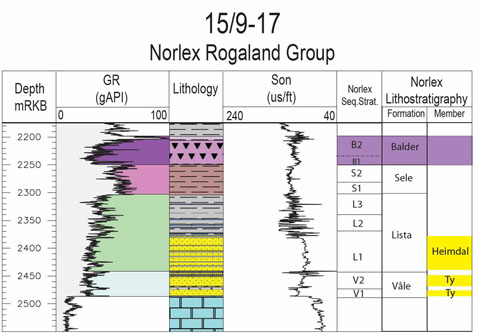
Fig. 128. Well 15/9-17 Composite log Rogaland Group. Stratigraphic position of the
Balder Formation is outlined in stratigraphic column to the right.
|
Composition
The Balder Formation is composed of laminated light to dark grey, fissile shales with
interbedded grey, green and buff, volcanic tuffs
(Fig. 129)
. The formation has
occasional stringers of limestone, dolomite and siderite and is often pyritic. Tuffs
are sometimes sandy. In the lower part of the formation, the mudstone is well
laminated with light to medium grey indurated silicious mudstone alternating with
medium to dark grey soft, fissile mudstone. In the upper part of the formation, the
mudstone is soft and poorly laminated. The tuffs mostly occur as thin strata, up to a
few centimeters in thickness, with sharp bases, commonly normal graded, and are
interpreted as undisturbed ash fall. In cores from Viking Graben wells, structureless
units, tens of centimeters thick, displaying dewatering structures are observed.
These beds are interpreted as resulting from
gravity flow re-sedimentation of primary air-fall tuff (Knox & Holloway, 1992; Malm et
al., 1984).
Sandstones units named the Odin Member and the
Radøy Member are locally present in the
Balder Formation
(Fig. 1 and Fig. 132)
.
 Fig 1: Location map of the Members of the Balder Formation.
Fig 1: Location map of the Members of the Balder Formation. |
A core description log example is shown in Fig. 130.
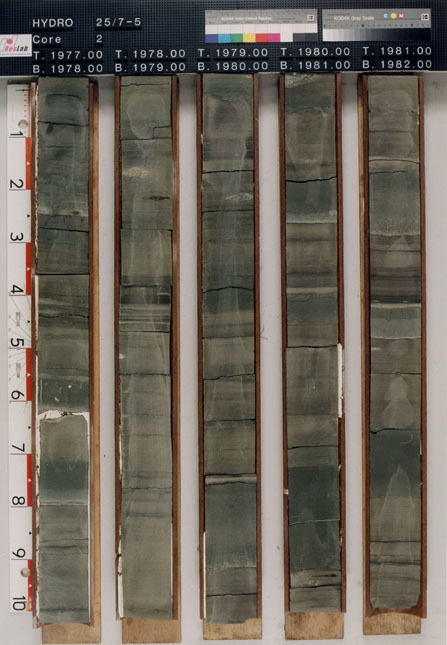
Fig. 129. Core photo from Balder Formation well 25/7-5. Drilled by Norsk Hydro. Photo
from NPD Fact Pages at http://www.npd.no.
|
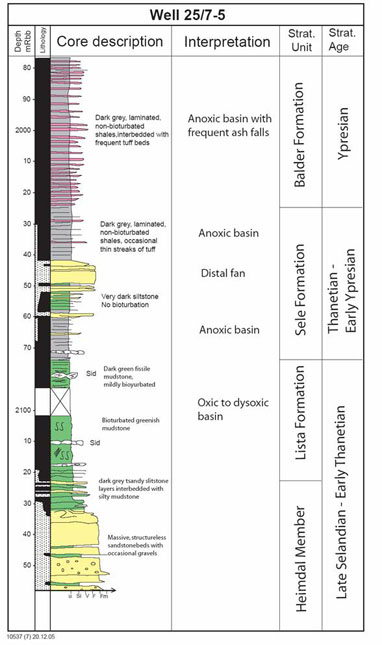
Fig. 130. Core description log from well 25/7-5. Section covers upper parts of the
Lista Formation with upper parts of the Heimdal Member, the Sele Formation with
sandstones belonging to Hermod Member, and most of the Balder Formation.
|
Wire line log characterization
The shales of the Balder Formation are generally characterized by low gamma readings
and high sonic reading. Spikes with high acoustic velocities are frequently seen, and
can be related to thin beds or nodules of carbonate or cemented tuffs.
Upper Boundary
The top of the Balder Formation is taken at the top of a prominent bell shape, often
expressed as base of a high gamma peak and a low acoustic trough. The lower tuff rich
parts of the lower Balder Formation can often be distinguished as a zone or a "belly"
of higher acoustic velocities.
Lower boundary
From wire line logs the Balder Formation is characterised by a bell shaped log
response. At the base a shift from high gamma readings and low acoustic velocities in
the Sele Formation to lower gamma readings and higher acoustic
velocities in the
Balder Formation is seen. Lithologically an abrupt increase in tuffaceous interbeds
from Sele upwards into the Balder Formation can be seen.
Thickness
The Balder Formation is 75 m thick in the type well. Generally its thickness varies
from less than 20 m to more than 100 m. Normally it is between 40 and 60 m. Sandstone
units belonging to Balder of over 200 m occur in the central and northern parts of the
Viking Graben; maximum thickness is 285 m, including the Odin Member.
Seismic characterization
Top Balder reflector
The top of the Balder Formation (Top B2) is often defined at a positive acoustic
impedence contrast that varies in strength. It is often weak and difficult to pick.
Base Balder/Top Sele reflector
The base of the Balder Formation (Near Top S2/Base B1) is often characterised by a
marked negative acoustic impedence.
Top Tuff zone - The Tuff Marker (Top B1)
The top of the Balder tuff rich zone (Top of zone B1) is a pronounced seismic surface
that can be regionally identified. It is characterised by a positive amplitude event and
the velocities increase downwards in Zone B1 relative to B2 related to a downward
increase in silica cementation (Knox & Holloway, 1992). This seismic event is often
more distinct and easier to pick than the Top Balder Formation, and is sometimes
mistaken for the true top Balder Formation.
Age
Lower Eocene (Early Ypresian).
Biostratigraphy
The upper boundary of the Balder Formation is slightly below the top of dinocyst
Deflandrea oebisfeldensis at the upper level of frequent D.
oebisfeldensis. In
terms of palynology the base of the Balder Formation is at the top of the Acme of
Cenodinium wardenense. Characteristic shelly microfossils are pyritized
pillbox-shaped
diatoms belonging in Fenestrella antiqua, ranging throughout the Balder unit,
and not
occurring stratigraphically higher. The Balder Formation is assigned to Zone NSR3 -
Fenestrella antiqua, of Gradstein & Bдckstrцm (1996), and to dinocysts zones
D5b - D7a
in Luterbacher et al. (2004), of Early Ypresian, earliest Eocene age.
Some diagnostic microfossils of the Balder formation are shown in Fig. 131.
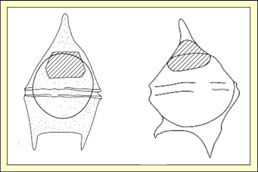
Fig. 131. Some diagnostic microfossils of the Balder Formation. Left: Deflandrea
oebisfeldensis Alberti 1959b. Dorsal view. Holotype dimensions: pericyst length =
150
µm, pericyst width = 88 µm., Right: Cerodinium wardenense (Williams and Downie
1966c)
Lentin and Williams 1987. Dorsal view. Holotype dimensions: pericyst length = 57 µm,
pericyst width = 46 µm, endocyst length = 36 µm, endocyst width = 43 µm. From the ODP
Drilling Program at http://www-odp.tamu.edu.
|
Correlation and subdivision
The Balder Formation can be subdivided into a lower (B1) and an upper (B2) unit (Knox
& Holloway, 1992). The base of the B1 zone is taken at the common Ceratopsis
wardenense. B1 is the lower and older zone, and is generally more tuffaceous than
the
B2 zone. Due to sparse biostratigraphic diagnostic criterias internally, the sub
division into the two zones is based on wire line log pattern recognition. The B1 zone
has higher velocity and lower gamma readings than the upper parts of B2, and often
there is a pronounced transition into lower values gamma and sonic log values going
into the B2 zone. The top of the B2 zone is picked near the top of the bell shape
defining the Balder Formation from wire line logs, coinciding with the common
Deflandrea oebisfeldensis and common Hystrichospheridium tubiferum
events. Internally
in the Balder Formation two sandstones are found, the Odin
Member
sandstones with a distribution in western areas of the Norwegian North Sea and the
Radøy Member with a distribution in the north-eastern areas of
the North Sea.
Geographic distribution
The Balder Formation is present in most of the areas where Paleocene sediments are
also present. Only along the eastern flanks where Paleocene sediments are partly
truncated, the Balder Formation is partly or completely eroded.
The distribution of
the Balder Formation with its respective members, is shown in Fig. 132.
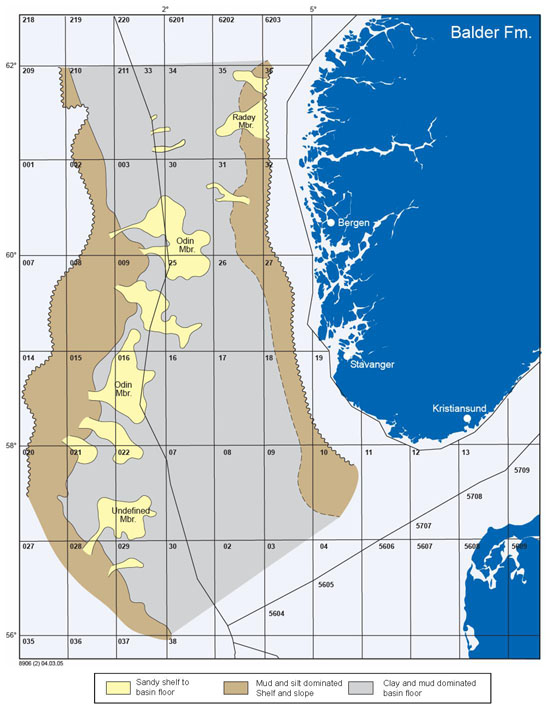
Fig. 132. Distribution of the Balder Formation and its sandstone members.
|
Depositional environment, volcanic activity and deposition of tuffs
The North Sea basin restriction that started with the deposition of the
Sele Formation
continued through the deposition of the Balder Formation. The Balder Formation was
deposited in a generally deep marine, anoxic environment, mainly as hemipelagic
sediments with frequent income of tuffaceous rain caused by ash falls from volcanic
activity.
There was probably more than one volcanic source for the extensive tuffaceous
components of the sediment, but in general they seem to have been connected to
volcanic
eruptions associated with the onset of break up of the Greenland and European
continents.
The igneous activity in the North Atlantic shows a wide age-range, but peaks between
55 and 50 Ma (Torsvik et al, 2002), spanning syn rift and a continental break-up
phase.
Large amounts of tuffaceous ash material were probably introduced into the
atmosphere and distributed over vast areas of North Europe during the rift late rift
phase.
The delicate lamination in the lower, tuff-rich mudstones is probably related to
varying proportions of diatoms, reflecting seasonal variations in productivity (Knox &
Holloway, 1992). The upward change from tuff-rich to tuff-poor mudstone at the B1/B2
boundary is believed to reflect a rise in sea-level combined with a decrease in
pyroclastic activity. The trend of upwards-increasing gamma values in the B2 mudstones
is interpreted as reflecting continued deepening (Knox & Holloway, 1992), and
gradually decreased tuffaceous input.






 Fig 1: Location map of the Members of the Balder Formation.
Fig 1: Location map of the Members of the Balder Formation.


